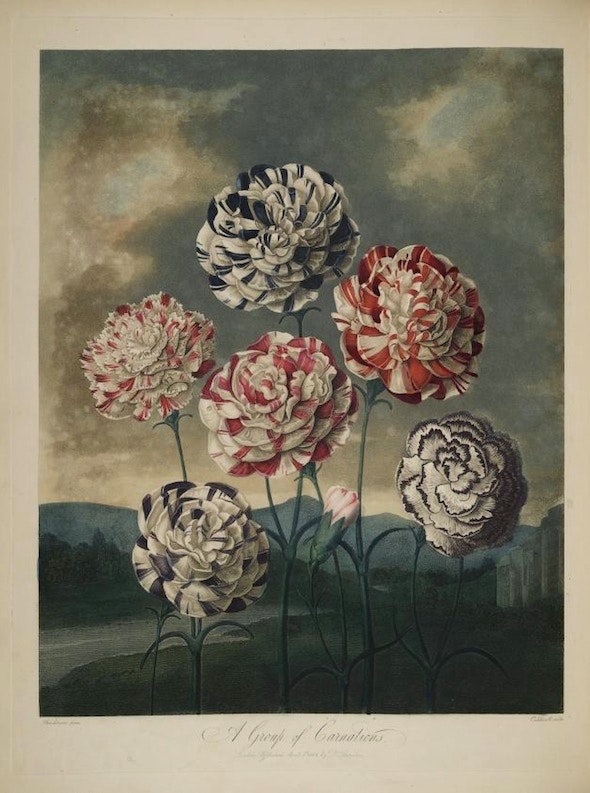
25 Jan Carnations from the Temple of Flora
As you know, we sometimes share artworks we think will appeal to our clients. You all love flowers, so during 2023 we’re going to bring you pictures from Robert John Thornton‘s Temple of Flora. This 1807 book completed Thornton’s New Illustration of the Sexual System of Carolus von Linnaeus. Many consider this three-part work of botanical science to be the greatest of all flower books. The plates that accompany the text are certainly stunning, and we can’t wait to show them to you. As a start, we’ve chosen this beautiful plate of a group of carnations from the Temple of Flora as our January art for garden-lovers.
So what was this three-volume flower book?
The first two volumes in the set of three contained Thornton’s discussion and explanation of the ideas of the Swedish scientist, Carolus von Linnaeus. However, we’re concerned with Part III, the Temple of Flora, which contained illustrations of thirty-one flowers. A well-known engraver, Thomas Medland, worked from paintings by Philip Reinagle RA. Another engraver, Joseph Constantine Stadler, produced further plates working from paintings by Peter Charles Henderson. Between 1798 and 1807, they produced thirty-three coloured plates, engraved in aquatint, stipple and line. Of these, Thornton used thirty-one in the finished volume which was published in 1807. He had originally intended a larger, folio-sized volume containing seventy plates. However, financial disaster meant that Thornton only produced around 800 copies, each containing 31 plates. The book proved an amazing achievement despite Thornton’s monetary problems, and Part III looked stunning. Poetry accompanied each image, along with explanatory notes on flower lore and legend. The flowers appeared in slightly unusual landscape settings, with each one a full painting rather than a simple scientific study. It’s well worth a closer look, and we’ll be sharing more in the coming months.
Group of Carnations
Our January choice is this beautiful print of a group of striped carnations. The artist shows the plants in the foreground, with a distant landscape behind. The grey sky sets off the soft hues of the flowers, creating a harmonious unity across the whole print. We think it’s a lovely image, and perfect for a grey January day like today! Carnations are also the birth flower for January, so a good choice this month in any case.
Next month we’ll show you another example from Thornton’s stunning book – look out for our February choice in a few week’s time.
